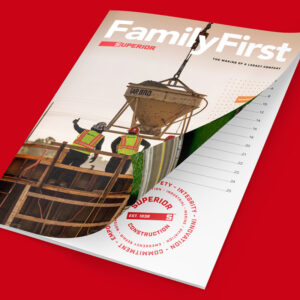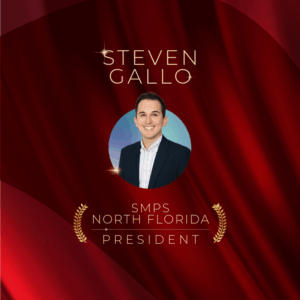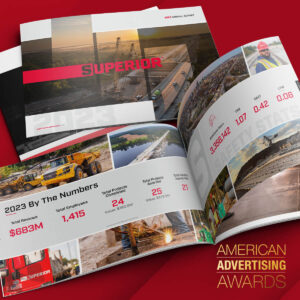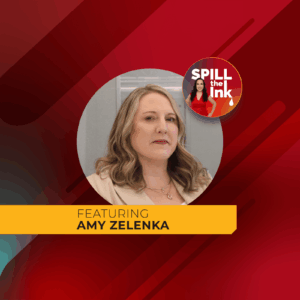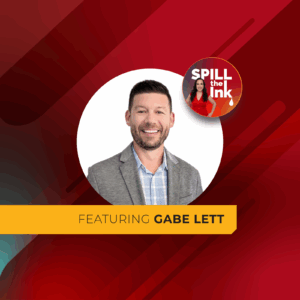
Inksights Blog : The Reputation Ink Blog
Is Your AEC Firm Invisible to AI Discovery? Here’s How to Fix It
Your firm just lost out on a major project. The client said they “went with someone else who seemed like a better fit.” Here’s what they didn’t tell you: they used ChatGPT to research firms and yours didn’t show up in the AI-generated responses.
While you’ve been perfecting traditional outreach strategies, savvy competitors have been optimizing their content for AI platforms that prospects are using to create firm shortlists. In today’s landscape, project descriptions and professional bios that aren’t built for AI discovery are essentially invisible to tools like ChatGPT, which means you could lose potential clients before they even know you exist.
Why AI Discovery Matters for AEC Marketing Right Now
The Shift
A Pew Research Center survey shows the percentage of Americans using ChatGPT has doubled since 2023. Your potential clients are among them. However, instead of Googling keywords and clicking through multiple results, many of them are using AI tools for specific searches like:
- “Best architecture firms for sustainable hospital design in the Southeast”
- “Which engineering firms retrofit buildings to be safer for earthquakes?”
- “Top structural engineers for high-rise buildings in Chicago”
The firms that appear in these AI responses capture website traffic. Those that don’t risk being overlooked entirely. This change in the way people search may be one of the most significant shifts in AEC marketing since the rise of digital communications.
The Problem
Here’s the challenge: Most architecture and engineering content is written for humans and Google, not AI interpretation. Traditional firm websites focus on broad capability statements and generic project descriptions that AI tools struggle to parse and prioritize.
The Opportunity
If you optimize for AI early, your firm could gain significant visibility advantages. While most firms continue using the same website language they’ve had for years, the ones adapting their content strategy for AI discovery are positioning themselves to capture more client attention. Forward-thinking AEC marketing teams are recognizing that AI optimization will soon become essential for business development.
Enhancing Your Marketing Content for AI Discovery
Your project descriptions and portfolio are often the first content potential clients encounter through AI research. Yet many firms treat these pages as afterthoughts, using template language that tells AI tools nothing about what makes them unique.
To optimize for AI discovery, focus on creating content that AI tools can more easily process and recommend:
- Specific, structured content rather than broad overviews
- Clear connections between expertise and outcomes
- Problem-solving narratives rather than service lists
- Measurable results and technical specifications
Creating content with these characteristics helps distinguish you from other firms and from the growing volume of AI-generated content. As we’ve discussed before, authority (not just expertise) has become the defining currency of credibility in today’s market.
The Questions That Matter
Ask yourself:
- Do you explain specific problems you solve for each sector? Instead of listing “healthcare projects,” describe how you “design patient-centered medical facilities that improve workflow efficiency and reduce infection rates.” This level of specificity doesn’t just help AI discovery — it demonstrates the kind of authentic expertise that can’t be automated.
- Do you show how your technical capabilities actually made a change? Don’t just mention your HVAC expertise — explain how your mechanical engineering solutions “reduced energy consumption by 40% while improving indoor air quality for 500+ office workers.”
- Do you balance industry knowledge with clear communication? Industry-specific terms like “seismic retrofitting” or “net-zero design” help AI categorize your expertise. But don’t forget to include context that non-experts can follow, such as “seismic retrofitting: making older buildings earthquake-safe.”
Before/After Example of Optimized Project Language
Before: “Our team completed a significant office renovation project downtown, delivering innovative solutions that met the client’s needs.”
After: “We transformed a 1960s-era office building into a modern, LEED Gold workspace, adding 15,000 square feet while preserving historic facade elements and reducing energy consumption by 35%.”
The second version gives AI specific details to work with: project type (office renovation), certification (LEED Gold), scope (15,000 square feet), specialty (historic preservation) and outcome (35% energy reduction).
Professional Bios: AI Needs to Discover Them, Too
When clients need to hire firms for complex projects, they often want to see the people who’ll be handling their needs. Individual professional bios are a big deal in AI discovery, especially when clients type in searches like “architects with 20+ years healthcare design experience” or “who’s the lead engineer at [firm name]?”
Build your team bios to maximize both AI discovery and client engagement:
- Lead with clear expertise areas and notable achievements. Start with “Jane Smith specializes in seismic design for critical infrastructure, with 15 years of experience designing earthquake-resistant hospitals and emergency services facilities.”
- Include specific project types and industry focus. Rather than listing credentials, connect them to real-world application: “Licensed in five states, Jane has led structural design for over $200 million in healthcare construction projects.”
- Connect credentials to work in the real world. “Her innovative base isolation design for Regional Medical Center reduced construction costs by 12% while exceeding seismic safety requirements.”
- Use clear headings: Education, Registrations, Project Experience and Specialties work better than paragraph-heavy formats.
Three AI Discovery Wins You Can Implement This Week
Don’t get overwhelmed. You don’t need a complete website overhaul to improve AI discovery. Some starter ideas:
- Add question-based subheadings that mirror how clients search. Instead of stopping at “Our Services,” add a subhead such as “How We Help Manufacturing Clients Reduce Facility Downtime” or “What Makes Our Hospital Designs Different.”
- Include FAQs addressing common project concerns. Questions like “How long does commercial permitting typically take?” or “What factors affect sustainable design costs?” help AI lead clients to the answers they’re looking for.
- Link project pages to relevant case studies. These connections help AI understand the depth of your expertise and provide richer responses to client searches.
The Takeaway
AI tools are reshaping how clients discover and evaluate architecture, engineering and construction firms. Small content changes can yield big improvements in visibility, but only if you understand what AI engines prioritize.
The firms adapting their content strategy now will have the competitive advantage. Your website isn’t just your digital brochure anymore — it’s your AI discovery engine. The question is whether you’re optimizing it to match the way clients actually find firms today.
Turn Your Expertise into New Business
Want to dive deeper into content marketing for AEC firms?
Content marketing isn’t just a buzzword — it’s a proven way for architecture, engineering and construction firms to attract and win the right clients.
Download our free e-book, How AEC Firms Can Win More Clients Through Content Marketing, and learn:
- What content marketing really means for AEC firms
- Why it’s essential to your growth strategy
- Real-world examples of firms turning expertise into revenue
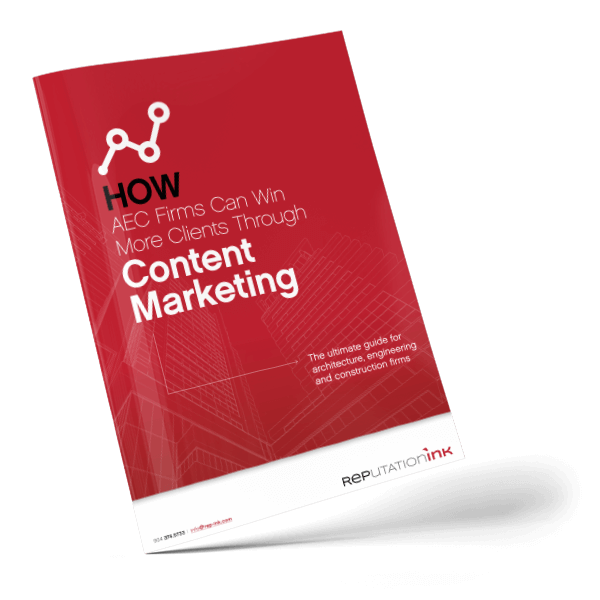
Related AEC Content
Maximizing Employee Engagement Through a Compelling Employee Newsletter
Reputation Ink | Jun. 24, 2025
Rebuilding a Construction Company’s Brand With Impactful Visuals
Reputation Ink | Jun. 24, 2025


